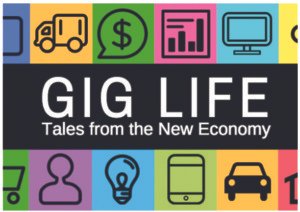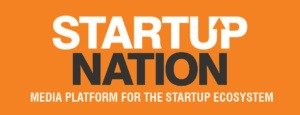
PRABHAKAR MUNDKUR speaks about the gig culture in India, its pros and cons and how it has picked up in a post Covid world
If you are seeing the average high-flying corporate executive sweating it out on the new way of working at home, you know who is having a quiet laugh. The inconspicuous gigger!
Neglected now for more than a decade, for the gigger working from home has always been the ideal way to work, irrespective of COVID-19. It was the new normal when he decided to join the Gig Economy. Thus far, the gigger has always been looked down upon by corporates as someone who doesn’t have a steady job. You hear the corporate executive saying ‘I don’t know what he does, he is always at home’. There has always been a certain indignity surrounding him.
 So, when the gigger hears the travails of corporate executives getting stressed out by Zoom calls and meetings, and not being able to multi-task their home duties with the work, they are finding it quite astonishing and backward. Because this is what they have always done. What is the big fuss about?
So, when the gigger hears the travails of corporate executives getting stressed out by Zoom calls and meetings, and not being able to multi-task their home duties with the work, they are finding it quite astonishing and backward. Because this is what they have always done. What is the big fuss about?
The gigger has come to us from every profession. Finance, advertising, marketing, engineering, IT and others. Many or most of them had respectable corporate jobs once upon a time and decided to give up the corporate rat race and operate from home. There have been many names given to them; freelancer, SOHO (small office, home office), gigger etc.
If you think the Gig Economy is an overseas phenomenon, think again. Over the last few decades, the Indian economy itself has changed. Once upon a time a large manufacturing and agriculture-led economy, the service sector grew by leaps and bounds, and today accounts for 53.66% of India’s GDP. It also accounts for the largest number of jobs in the economy. The industrial sector is now in the second spot followed by agriculture. This is the route that was taken by the developed economies, as well.
Enter a new demographic group called the millennials – the focus for every marketer today. By one calculation India has the largest millennials in the world which account for about 400 million. These are people born between 1980 and 2000. And millennials are at least partly responsible for having contributed to the gig economy. A gig economy is defined as ‘a labour market characterized by the prevalence of short-term contracts or freelance work as opposed to permanent jobs’. (Oxford Dictionary).
 An unconventional work approach from the millennials, combined with the digital invasion and hectic schedules in the private sector might well have been responsible for creating the gig economy. According to one PayPal report, one in every four freelancers in the world is from India. “India is today the largest freelancer market in the world and poised for growth,” says Narsi Subramanian, Director Growth, PayPal India
An unconventional work approach from the millennials, combined with the digital invasion and hectic schedules in the private sector might well have been responsible for creating the gig economy. According to one PayPal report, one in every four freelancers in the world is from India. “India is today the largest freelancer market in the world and poised for growth,” says Narsi Subramanian, Director Growth, PayPal India
And if you have been using the word ‘gig’ more than often than you did before and have wondered where the word came from, a gig is slang for a live musical performance. Musicians referred to their contracts as gigs.
In the US alone, more than a third of US workers are in the gig economy accounting for 57 million workers. What has produced this change on a global basis?
The rise of new-age industries like Uber, Ola, Amazon, Flipkart and other tech businesses have more and more workers that are doing part-time work, or side hustles as they are popularly called and joining the gig economy. Most of the time these are jobs that you do between full-time jobs or if you have just been laid off, or thoroughly bored with your current 9 to 5 job. When I was younger they were called freelance jobs. Or if you took up some part-time assignment while doing a full-time job, we often referred to it as ‘moonlighting’.
The big problem is that these jobs are not easy to count.
Often, one is not sure if this constitutes a living wage, but it does seem like many people are making more money than their previous ‘9 to 5s’. Independent workers who are counted in the gig economy often have better satisfaction levels than the 9 to 5ers. That is largely because they don’t work within the strict confines of an office with its codes and disciplines. They are ones who frequent a Starbucks for example and do business over a cup of coffee and laptops in hand. And the rest of the time they might be working from home with their babies or pets by their side.
How do they get paid?
They are all using digital payment systems. PayPal, Google Pay, PayTM, BHIM and other payment apps have made it easy for the ‘giggers’ to accept instant payments for the work they do instead of waiting for pay cheque which gets deposited into your bank account at the end of the month. One millennial I know who gave up a media job to become a qualified baker, says she accepts any digital payments – GooglePay, PayTM, PhonePe, BHIM besides traditional bank payments through NEFT and IMPS or even cash.
The problem is that current employment data which is largely based on household and enterprise surveys, is often not the best way to estimate jobs in the new economy. The government also uses other data like the Provident Fund data to compile the number of jobs. But with provident fund no longer being compulsory, many millennials are opting out of it because they believe that short term gain is more important than long term savings. They would rather see the money in their own hands every month. In addition, companies are recruiting more and more people as consultants rather than as full-time employees. For them, the benefit is that there is no long-term liabilities like provident fund, medical and other employee benefits and superannuation.
The other evasive sector, of course, is the informal sector. Estimates vary but according to one estimate, 85% of the jobs in the economy come from the informal sector. This is not unusual and common for Asian economies. Rafael Diez de Medina, Director of ILO’s Department of Statistics says, “The high incidence of informality in all its forms has multiple adverse consequences for workers, enterprises and societies and is, in particular, a major challenge for the realisation of decent work for all and sustainable and inclusive development.” And no doubt, the the novel Coronavirus has badly impacted the informal sector. With the government making a move to gather more data also from other organisations like Ola, Uber and professional bodies, the employment data should look more robust. That hopefully should help to nail down the number of gigs in the new gig economy and help to come out with a better estimate of employment rates.
And now here comes the final threat. With the novel Coronavirus around, a lot of the people who previously might not have been counted in the Gig Economy might need to be added. That is if you want to include all the people working from home as a result of COVID-19!





